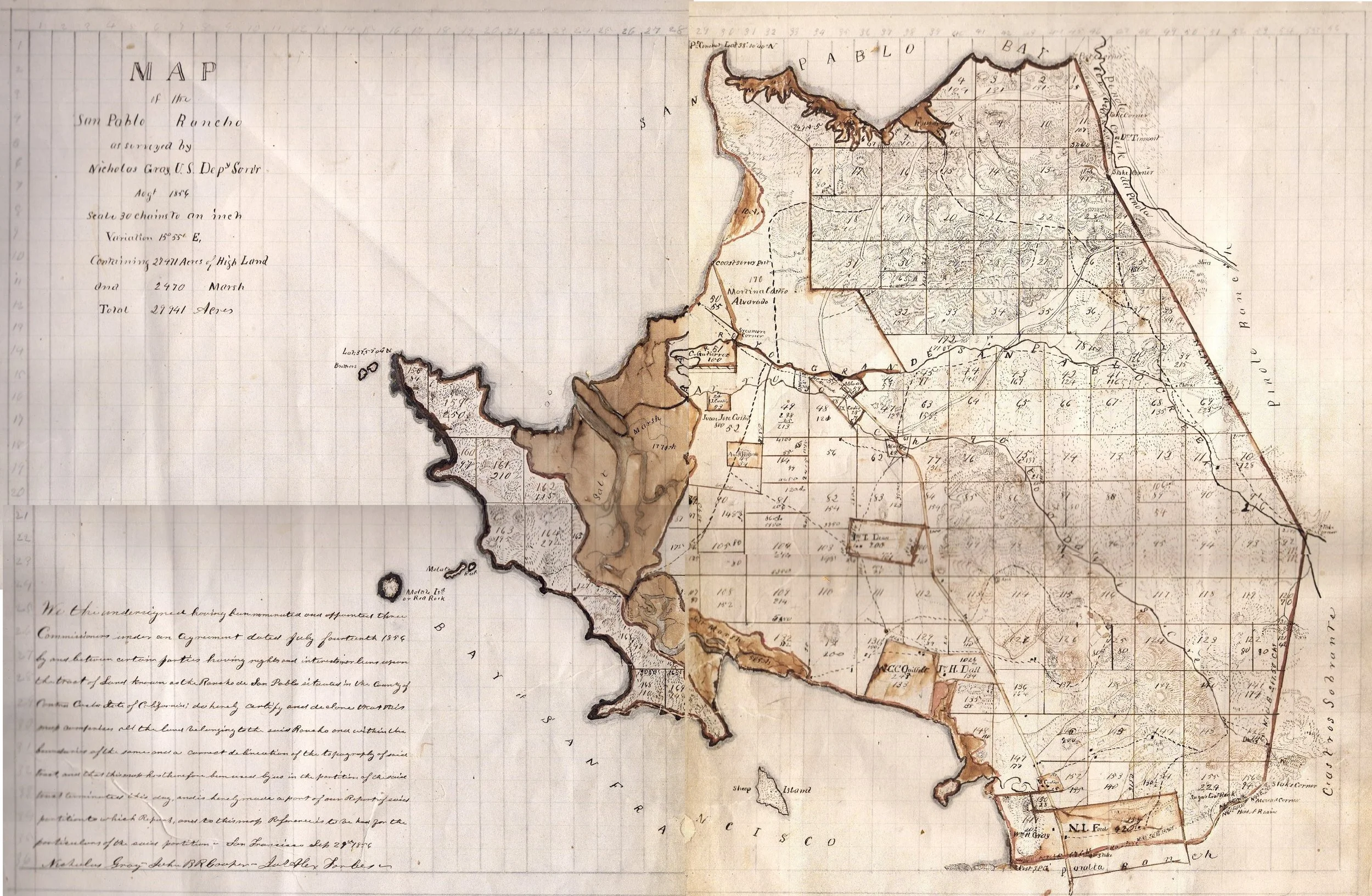Don Francisco Castro and the Rancho San Pablo
1856 composite map of San Pablo Rancho by U.S. Surveyor Nicholas Gray.
This is an excerpt from “The Adobe at Cerrito Creek,” a 12-page history of the Castro Adobe, from its beginnings in 1837 to its destruction by arsonists in 1956, written for the El Cerrito Historical Society in 1975 by El Cerrito Fire Department Chief Inspector Earl Scarbough. This section describes the beginnings of Rancho San Pablo under the ownership of Don Francisco Castro.
Born in 1775 in the town of Sinaloa, District of Sonora, Mexico, Don Francisco Maria Castro, became a soldier in the Army of Spain and was sent to the Presidio of San Francisco at about 1800. There he served as a corporal of artillery and later became a member of the Provincial Assembly of Upper California.
In 1823 Don Francisco petitioned California’s first Mexican Governor, Governor Luis Arguello, for a grant of land on the Contra Costa (opposite shore). He received a temporary (provisional) land grant in April 1823 of over 19,000 acres of wilderness occupied by Indians, deer, Grizzly bears, antelopes, coyotes and mountain lions in what is now the cities of Richmond, San Pablo, El Cerrito and Kensington. It was to this wild country across the bay that Don Francisco moved his wife, Dona Gabriela Berryessa de Castro, and their children to become the first white settlers in Contra Costa County.
Don Francisco built an adobe house on the banks of Wildcat Creek at what is now the southwest corner of San Pablo Avenue and Church Lane in the City of San Pablo. There he established the headquarters of his Rancho San Pablo. He planted an orchard with many fruit trees, a vineyard, built a mill and sowed fields of wheat, corn and beans. Over the years he saw his herds grow until 1,400 head of cattle, 600 sheep and 600 horses roamed the rancho's unfenced ranges and hills. Life on Rancho San Pablo must have been as hard as any pioneer life could be, but still pleasant, for the rancho was the scene of many fiestas and other happy gatherings. The rancho’s cattle supplied the family with food as well as hides and tallow for the “Yankee Trade.”
Don Francisco lived on his rancho until his death on November 3, 1831. He died at the age of 56 years, but left behind a rancho that was to be the cradle of Contra Costa County’s infancy and the birthplace of its civilization. Don Francisco was buried· in San Francisco at the Chancel of Mission Dolores.
Three years after his death, Dona Gabriela and their 10 children received a final decree of ownership of Rancho San Pablo from Governor Jose Figueroa.
Excerpted from “The Adobe at Cerrito Creek,” a 12-page history of the Castro Adobe. Read the entirety here (PDF file).


